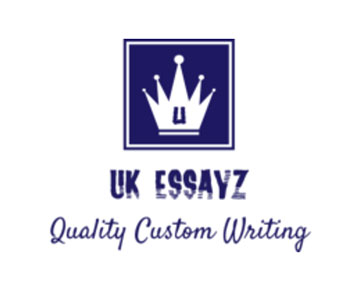The owner of Bowlen has approached you with a consultancy proposition. He hired a market research agency to collect and synthesize some data for him regarding the marketplace in 2018 and needs help analysing the results. The dataset has representative information for 10% of his customers, as well as 10% for each competitor. He has compiled this information to include sales in two years (2017,18), approximated marketing costs in two years (2017,18), satisfaction with different salient features of each product (2018), word-of-mouth (2018), an estimate of category spending (2018) and some profiling data (2018). He has also estimated the cost of goods sold figure and believes this to be accurate for the purpose of your endeavour. He has a single dataset but has sliced it into separate datasheets for each brand.
He currently has little idea about how his business is performing relative to the competition. He has approached you to interrogate the dataset and provide him with insights that deliver a clearer perspective of his business/marketing performance, the overall market, and make recommendations for moving forward. This requires you to explore (i.e. mine) the dataset and employ relevant key metrics. It is necessary for you to decide “what” to analyse and then provide a report of your findings with the goal of maximising the insight delivered to the client. Note that the report MUST reflect the data (make inference-led suggestions) and be easily interpretable. Furthermore, he would also like you to ‘customdesign’ an infographic ‘dashboard’ for disseminating the identified information to employees.
This assignment draws predominantly upon the material covered in Lectures 2-4 (and some aspects of 5), coupled with the Excel skills picked up via the online tutorials during the same period. The flow or sequencing of the assignment will happen as follows: • In Lecture 1 you will be given the details of the assignment. After Lectures 2 & 3 an online video (webisode) providing a refresher of the basic Microsoft Excel skills to complete the assignment will be released on Blackboard. If you have more intermediate to advanced skills in Excel (pivot tables, etc.) this can be used, but we will only require a more functional level of competency, as the assignment is not really a software task.
• At the end of Lecture 3 you will be given access to the customer dataset on Blackboard. This should be downloaded and saved.
• Using the knowledge gained in tutorials and class, you should analyse the dataset. HINT: spend some time deciding how you will do this – plan which variables / metrics will be included before you start your analysis. Originality and creativity is your friend in this assignment. Try not to be formulaic, replicating what others in the class do. Innovative analysis and thinking will be rewarded [note: this is important in business since standing
SEMESTER 1 2019/20
out from the crowd will help you to achieve a higher rate of tendering success, and to charge “price premiums” over competitors. Making a concerted effort not to conform to the crowd / herd is therefore encouraged].
• You should then prepare a professional report (considering the assignment mark sheet and grade descriptors). You may like to use the following (basic) structure if you are struggling to formalise the assignment, but you are welcome to follow the structure that works best for you and your approach to the report:
Abstract / Executive Summary (approx.100 words): Summary of the key findings of your report including figures from your analysis.
Introduction (approx. 200 words) Overview of the client’s need for this consultancy project & any relevant background information you think is pertinent to the case study.
Findings (approx. 1000-1500 words): Write up of your findings as a result of analysing the dataset. Tables and Graphs, which do not contribute to the word count, should be used where helpful to do so. It is your choice how you present the findings, but having a clear structure to your results section is always helpful.
Conclusions, Recommendations & Limitations (approx. 500-750 words) This section should draw together the report. In many ways it is (one of) the most important element(s) of the work so think carefully about what you want to say. You should address the following as a minimum: o What are the most important findings for the client? o What practical recommendations would you make to the client as a result of your findings? What would you suggest they might do / change as a result? Make sure these are “data-driven” recommendations. o Is there anything that might limit your ability to comprehensively advise the client? What would you recommend to the client as a result? What would you suggest it does in the future? NOTE: all metrics have considerations/limitations – making the client aware of these is important as an analyst.
Final Reflections (approx. 500-1000 words) After completing this piece of work it is important to honestly reflect upon your learning experience. This should be a short account, written in the first-person that outlines your thoughts about your learning journey in preparing and delivering this assignment (i.e. report). Normally this will use between 500-1000 words of your total word count – using more than this is dissuaded.
This should not be simply a descriptive reflection about what you have learned (e.g. excel skills, market share metrics, etc.). You should question (for instance) the following: o What did you learn that you did not already know? o How did your knowledge before change throughout the course? o What did you like / dislike? o What did you find difficult / less difficult? o What might you do differently if you could start the project again? o How might you use the skills learned in the future? o What will you do to develop your knowledge of this subject in the future? NOTE 1: where it is possible to include reference to examples / key academic literature this should be used and is necessary for higher marks. NOTE 2: reflexivity requires you to be honest and emotional in your writing. Think of this as more like your memoirs rather than a text message or email about your weekend to friends.
SEMESTER 1 2019/20
Dashboard Infographic Following your report you should select key information/data to be relayed to employees (and potentially other stakeholders) of the client, which can easily be updated on a regular basis.
The following advice is given with regard to the infographic dashboard: – It should be a single A4 sized document. – It should present the most salient information identified in your analyses (from the perspective of employees/stakeholders). – It should simplify the information analysed and present the data in an attractive, streamlined and interesting manner (some hints found in Pauwels et al, 2009 paper). – Specialist free software can be used (e.g. Easel.ly, CANVA, etc.) but it is also feasible for students to use any Microsoft package (Word, PowerPoint, etc.) for this job. This is a creative task giving students freedom. As such, no support can be given by the lecturer for this task, but some examples will be shown in class.
Final Appendix Additional tables and charts or data that supplement the main body of your work. These belong in the main document.
Your MS Excel file Separate hand-in link (see section on Submitting below). You must submit your analysed spreadsheet in the submission. This will be used to verify that you have understood the consultancy brief, and that you have employed the appropriate techniques to arrive at your results.
Be advised that how you present the spreadsheet is your prerogative but employing the processes discussed in the Excel tutorial videos may benefit you. You should aim to label your calculations in the Excel spreadsheet to enable your marker to assess the work more easily. I will sample and then review these using software to determine legitimacy. Without a working spreadsheet your report will be questioned.







